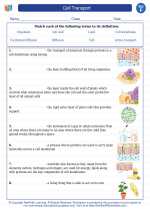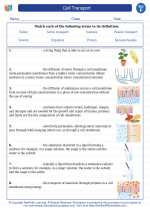Bones
Bones are the rigid organs that form the endoskeleton of vertebrates. They provide a framework for the body, protect internal organs, and facilitate movement. There are 206 bones in the adult human body, and they come in a variety of shapes and sizes.
Structure of Bones
Bones are composed of two types of tissue: compact bone and spongy bone. Compact bone is dense and hard, providing strength and support, while spongy bone is porous and contains red bone marrow, where blood cells are produced. Bones also contain a network of blood vessels, nerves, and connective tissue.
Functions of Bones
- Support: Bones provide a framework for the body and support the weight of muscles and organs.
- Protection: Bones protect vital organs such as the brain, heart, and lungs.
- Movement: Bones, along with muscles, facilitate movement and provide attachment points for muscles.
- Mineral Storage: Bones store minerals such as calcium and phosphorus, which are essential for bone strength and other bodily functions.
- Blood Cell Formation: Red bone marrow inside bones produces red blood cells, white blood cells, and platelets through a process called hematopoiesis.
Types of Bones
Bones can be classified into four main categories based on their shape: long bones (e.g., femur, humerus), short bones (e.g., carpals, tarsals), flat bones (e.g., skull bones, ribs), and irregular bones (e.g., vertebrae, hip bones).
Bone Growth and Repair
Bones grow and develop through a process called ossification, in which bone tissue replaces cartilage. This process occurs during childhood and adolescence. Bones can also repair themselves after injury through a process called remodeling, where old bone is resorbed and new bone is formed.
Common Bone Disorders
Some common bone disorders include osteoporosis, a condition characterized by low bone density and increased risk of fractures, and osteoarthritis, a degenerative joint disease that affects the cartilage in the joints.
Study Guide
- What are the two types of tissue that make up bones?
- What are the functions of bones in the body?
- List and describe the four main categories of bones based on their shape.
- Explain the process of bone growth and repair.
- Identify and describe two common bone disorders.
[Bones] Related Worksheets and Study Guides:
.◂Science Worksheets and Study Guides Sixth Grade. Cell Transport

 Worksheet/Answer key
Worksheet/Answer key
 Vocabulary/Answer key
Vocabulary/Answer key
 Vocabulary/Answer key
Vocabulary/Answer key
